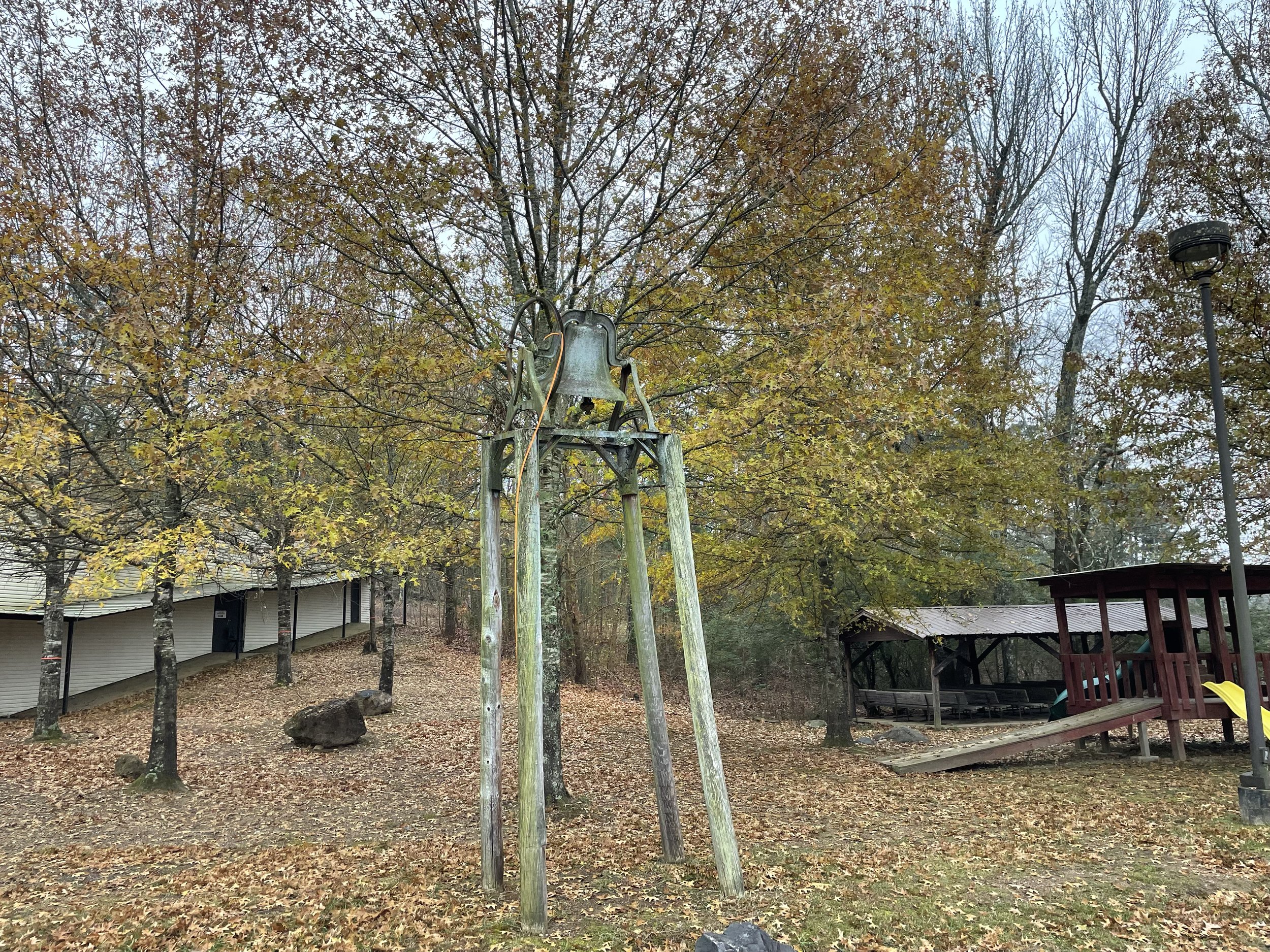
HOW IT ALL BEGAN
The History of Bogg Springs
Bogg Springs is a camp operated by the American Baptist Association of churches. Bogg Springs is nestled in the foothills of the Ozarks in Western Arkansas. We have dorms for guys and ladies, recreation facilities, a hotel, family units, cafeteria, pool, trails, and other facilities on our property.
The campgrounds are supervised year-round by our on-site supervisor Jon Jacks and his family. Other staff workers live on or near the grounds throughout the year. College students work at the camp throughout the summer.
The Beginning Of Bogg..... The site of the present-day Bogg Springs Baptist Encampment has an interesting history. The original pioneering community was called Oak Grove. Oak Grove was settled by fewer than ten families around the 1870's. A building that served as a church and school is still in use, after being rebuilt several times, for cemetery decoration days each May. Oil lamps are the only lights the building contains even now.
Mr. Charlie Smith, whose grandfather bought and developed Bogg Springs, provided much of the oral history of the early settlement. Mr. Smith stated in a lecture at Oak Grove in 1960, "I came by this church in 1895 with my grandfather on our way to Bogg Springs to live. My grandfather bought the property from the State of Arkansas for the sum of $200." They developed the property as a health resort based on the long-held belief that the Bogg Springs waters had great medicinal value. Among other interesting things, Mr. Smith stated that logs cut from the present creek bank were large enough to singularly fill a railroad flat car.
Bogg Springs grew from one pioneer house to a popular health resort. It became a township with its own post office and school soon after the turn of the century. The first railroad was built along what is now Highway 71 in 1898. This opened up transportation through the area so guests could come from far and near to drink the magic waters and be cured of what ailed them. Guests normally rode the train to Hatton Gap, the only close town at the time, and came by horse and buggy to the resort. In the early years, small hotels were built to house the guests. The health services so widely sought consisted of putting people in crudely-built sauna baths and forcing them to drink large quantities of water. Reportedly, the results were often amazing. There were reports of people coming in wheel chairs and on stretchers and walking out after the treatments were finished. The medical community now tells us that anyone drinking large amounts of water and sweating profusely stands a good chance of getting better. The springs do have a high mineral content, but it could be safely said that they are not miraculous.
Bogg Springs, the resort, continued for years from the turn of the century until the 1950's. The present hotel was built in 1907 and is still used to a limited degree. During its early years it was filled with guests who ate food grown almost entirely on the grounds and consumed massive amounts of spring water. Charlie Smith started the first telephone company in southwest Arkansas while running the resort. With this expanded media of communication, guests became plentiful and more diversified as to their demands for entertainment. As time passed, Bogg Springs became a community center for the local people. A number of dance bands and a considerable amount of locally produced white lightning changed the nature of Bogg Springs from a health resort to something not so healthy.
The property changed hands a number of times after the original owners sold it. It was sold first to the Corning family. They in turn sold it to a Dr. Shirley. He sold the property to Mrs. Ethel Jones who operated the hotel during its decline in popularity and profitability. Mrs. Jones sold the property to C.G. Davis from whom the Bogg Springs trustees bought the property in 1960.
The decline in the use and popularity of the Bogg Springs resort was not caused by its failure in its early noble purposes, but by later changes that took place. Stories of shootings, fights, gambling, and excessive drinking in the 1930's and 40's marked the Bogg Springs area as a place to avoid. Lum and Abner of radio fame and Dick Powell, who later became a Hollywood star, performed in the building which later became the "rec hall" for the church camp. There is also a substantiated report that Pretty Boy Floyd, a notorious gangster, was a guest at the Bogg Springs hotel for several days in the 1930's. He showed a young boy, who later told the story, a car trunk filled with guns.
Bogg Springs As A Youth Encampment The idea of Bogg Springs being converted to youth camp purposes must be credited to Mr. and Mrs. L.C. Laws. The Laws owned a cabin across from the hotel. This gave them a first-hand look at the use and the misuse of a wonderful natural setting. They began to visualize the use of the property for more godly goals.
When the opportunity presented itself, the Laws told Bro. J.B. Powers, pastor of County Avenue Baptist Church at the time, of this vision for a possible youth camp. Bro. and Mrs. Powers became very interested and soon looked at the property as a possible camp site. They were impressed and reported their findings to Brethren O.H. Griffith and E.E. Swearingen who also became interested.
By this time the national encampment groups had grown in size and strength. It was apparent to these Brethren Griffith and Swearingen and others that the next step should be to acquire suitable campgrounds property for use of ABA churches. The U.S. Corps of Engineers had offered a long-term lease on property at Lake Texarkana. However, the property was totally undeveloped and ownership was not possible. With this in mind, the use of the offered property seemed, to most, not a viable option. Bogg Springs, on the other hand, was well located, partially developed and immediately available.
In the spring of 1960, County Avenue Baptist Church, where J.B. Powers was pastor, voted to sponsor the purchase of the Bogg Springs property. They then appealed to other ABA churches in the area to aid in securing the property.
The plan was presented to the state youth meeting when it convened in Fort Smith, Arkansas. They endorsed the planned purchase. At almost the same time the plan was presented to the Texas young people at their annual meeting and they also concurred. At the ABA meeting one week later in Kansas City, Missouri, a resolution was presented concerning the Bogg Springs purchase and development.
In the resolution, which was accepted by the messengers, an elected trusteeship was called for to receive, raise and disperse funds and to hold title to said Bogg Springs property. The property consisted of 168 acres of land, a 23-room hotel, and some other smaller buildings. The purchase price was $40,000. The first elected trustees were J.B. Powers, O.H. Griffith, and E.E. Swearingen.
The early years of Bogg Springs camping development were touch and go. A substantial sum of money was needed to prepare the property to accommodate campers. Plumbing and sewage work had to be done. Existing buildings needed repair and painting. Bedding for a minimum of 250 campers had to be obtained. Mr. and Mrs. Earl Lee were hired as caretakers at a salary of $150 a month. From the very first, the trustees worked double time to try to get the camp into early operation. Because of space limitations, the national camp could not meet there in the summer of 1961; however, some smaller camps did meet that summer and interest began to increase over the prospects of future camping. The first report of the trustees to the ABA in 1961 showed that $25,000 had been raised and invested in camp improvements.
Conditions were less than ideal during the early years of camping. Hot water for bathing was but a dream for the males in their quarters. The buildings, one a barn, were crowded, crude and cracked. However, even in the worst times, campers pulled together to make camping a spiritually productive experience.
